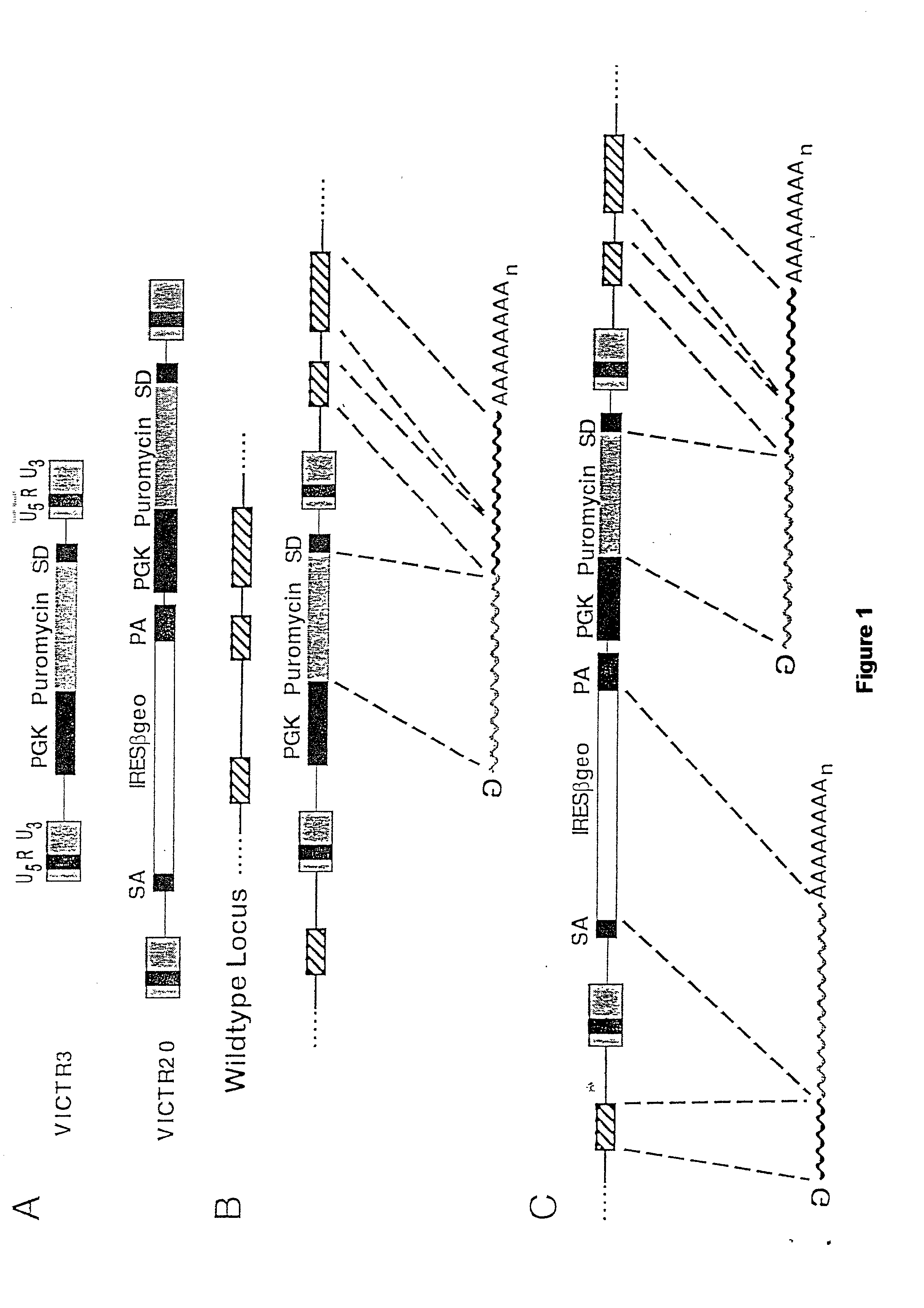Novel murine polynucleotide sequences and mutant cells and mutant animals defined thereby
a technology of murine polynucleotide sequences and mutant cells, applied in the field of molecular genetics, can solve the problems of inability to easily automate, laborious methods, and limited method potential,
- Summary
- Abstract
- Description
- Claims
- Application Information
AI Technical Summary
Benefits of technology
Problems solved by technology
Method used
Image
Examples
Embodiment Construction
[0019] The current invention relates to novel polynucleotides which are expressed in mouse embryonic stem cells ("ES cells") and which provide unique tools for gene discovery, diagnostic gene expression analysis, cross species hybridization analysis, and for genetic manipulations using a variety of techniques known to those skilled in the art, like, for example, antisense inhibition, gene targeting, etc. Furthermore, the expression of these novel polynucleotides in ES cells suggests their involvement in developmental and cell differentiation processes, making them good candidates to treat disorders and abnormalities affecting development and cell differentiation.
[0020] Additionally, because they are totipotent, the disclosed mutated ES cells (Lex-1 cells from murine strain A129) can be microinjected into blastocysts, introduced to pseudopregnant host animals, and the offspring bred to produce mutated animals as described, for example, in "Mouse Mutagenesis", 1998, Zambrowicz et al.,...
PUM
| Property | Measurement | Unit |
|---|---|---|
| pH | aaaaa | aaaaa |
| temperature | aaaaa | aaaaa |
| pH | aaaaa | aaaaa |
Abstract
Description
Claims
Application Information
 Login to View More
Login to View More - R&D
- Intellectual Property
- Life Sciences
- Materials
- Tech Scout
- Unparalleled Data Quality
- Higher Quality Content
- 60% Fewer Hallucinations
Browse by: Latest US Patents, China's latest patents, Technical Efficacy Thesaurus, Application Domain, Technology Topic, Popular Technical Reports.
© 2025 PatSnap. All rights reserved.Legal|Privacy policy|Modern Slavery Act Transparency Statement|Sitemap|About US| Contact US: help@patsnap.com

